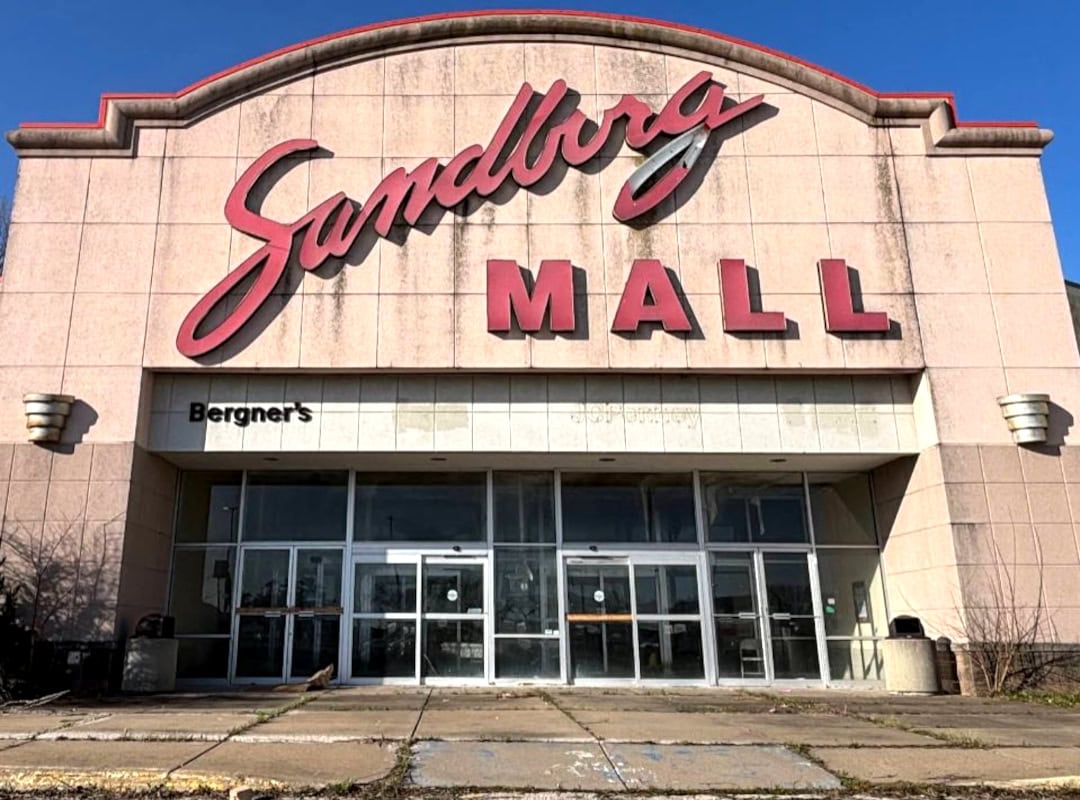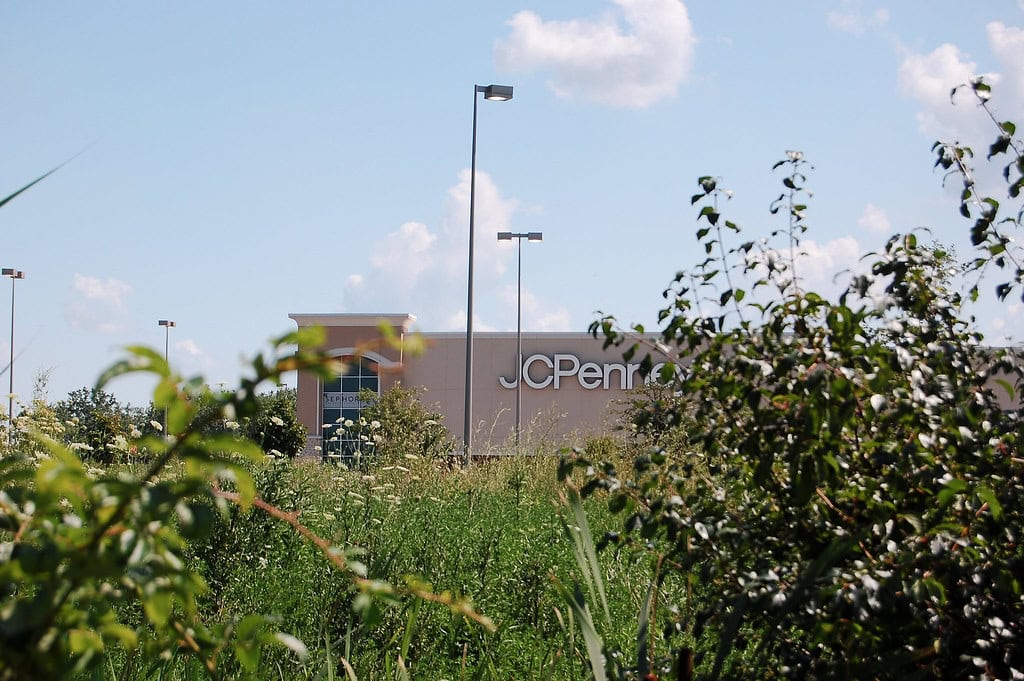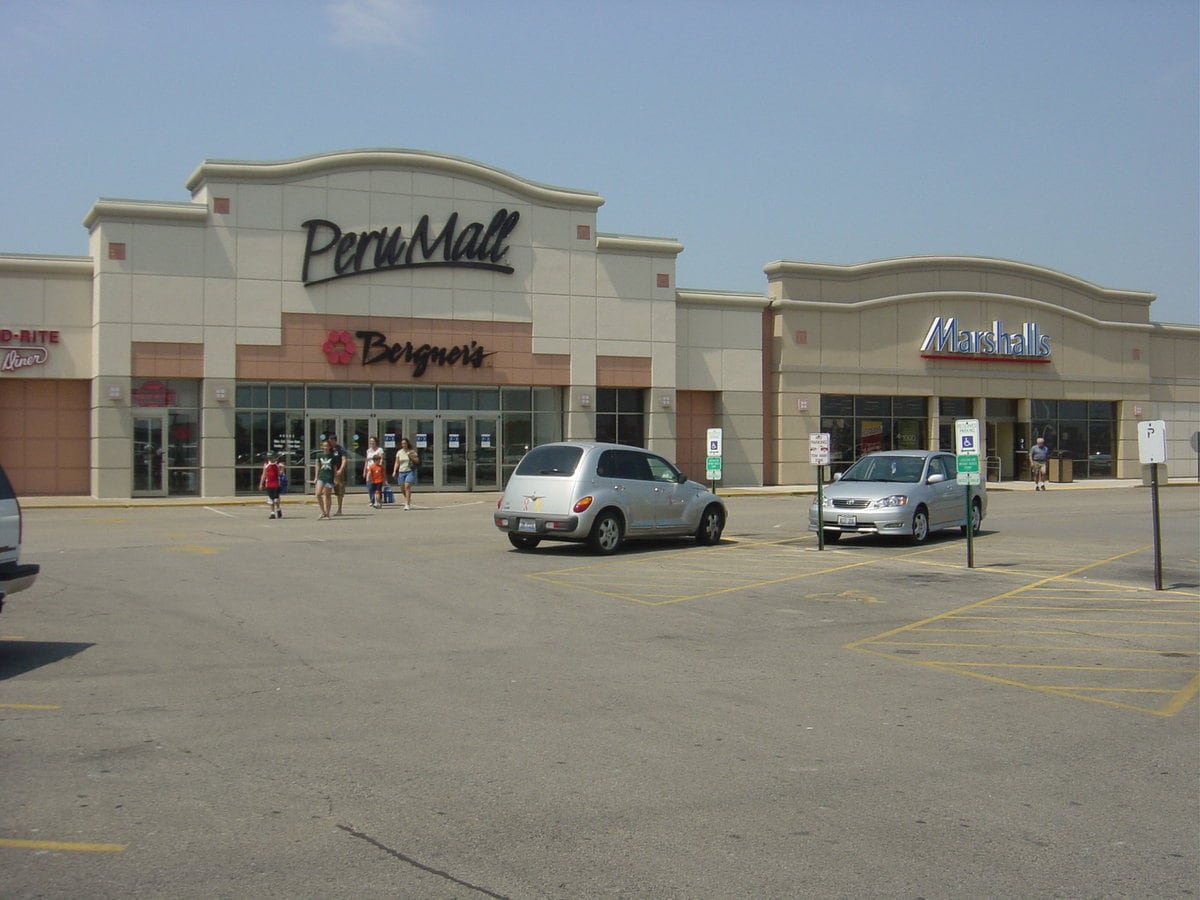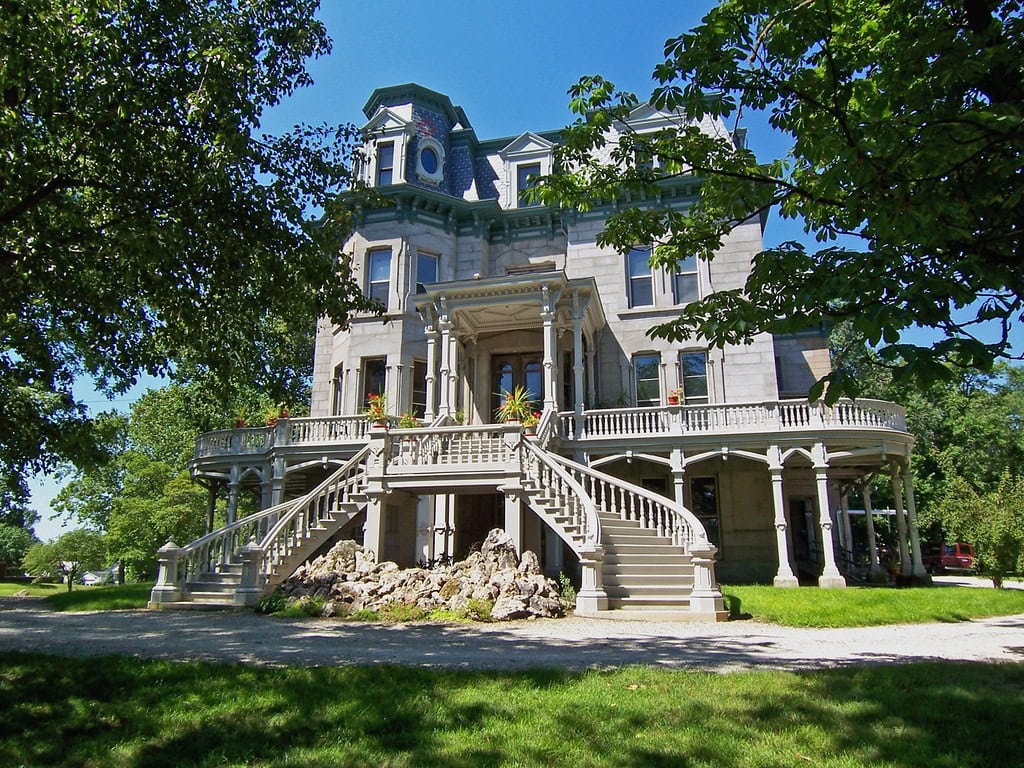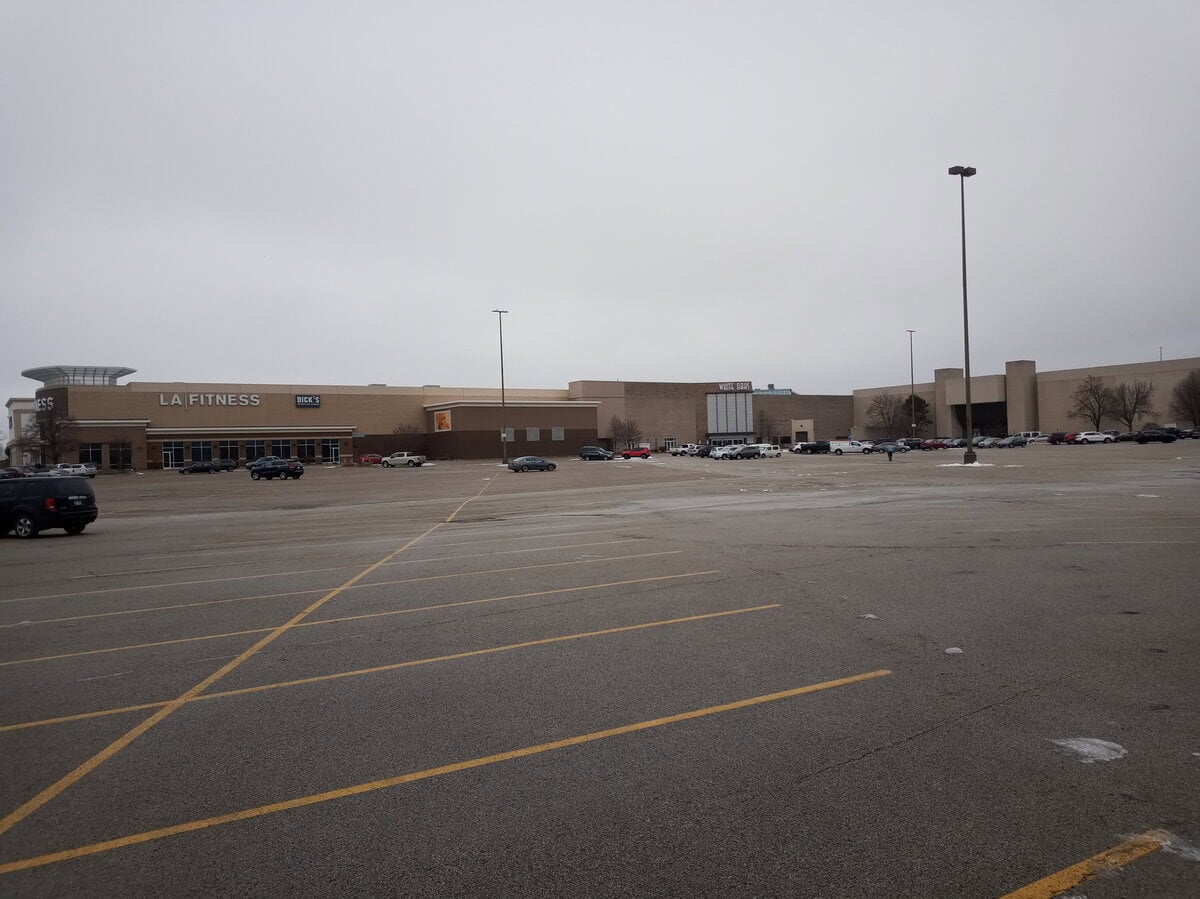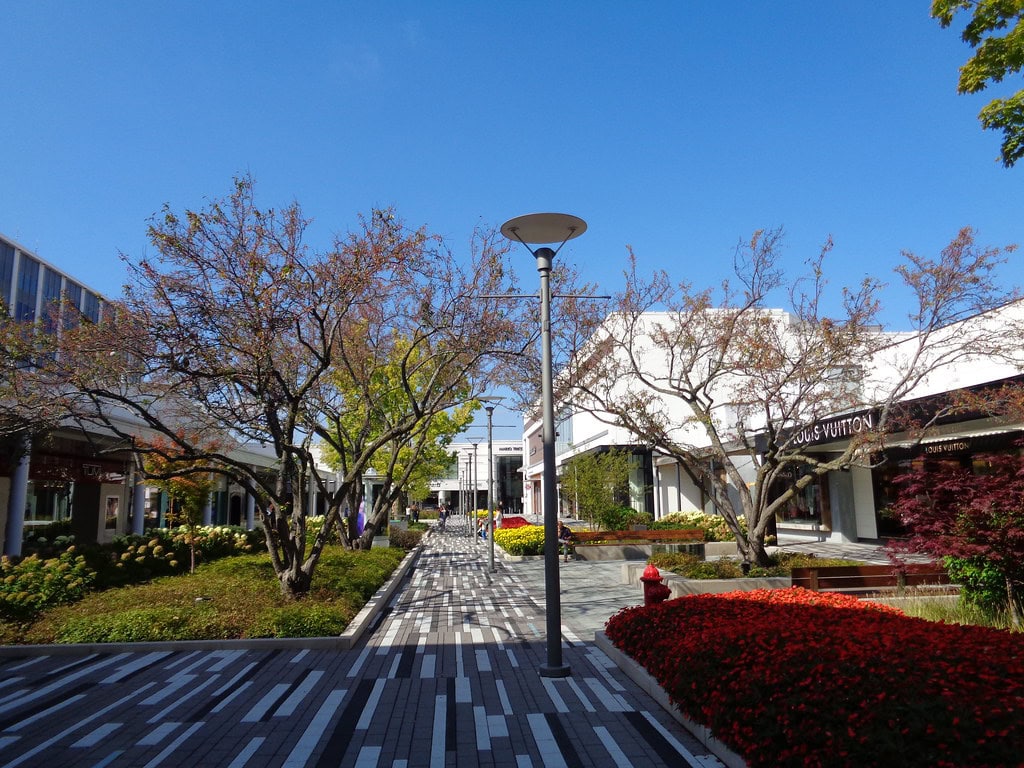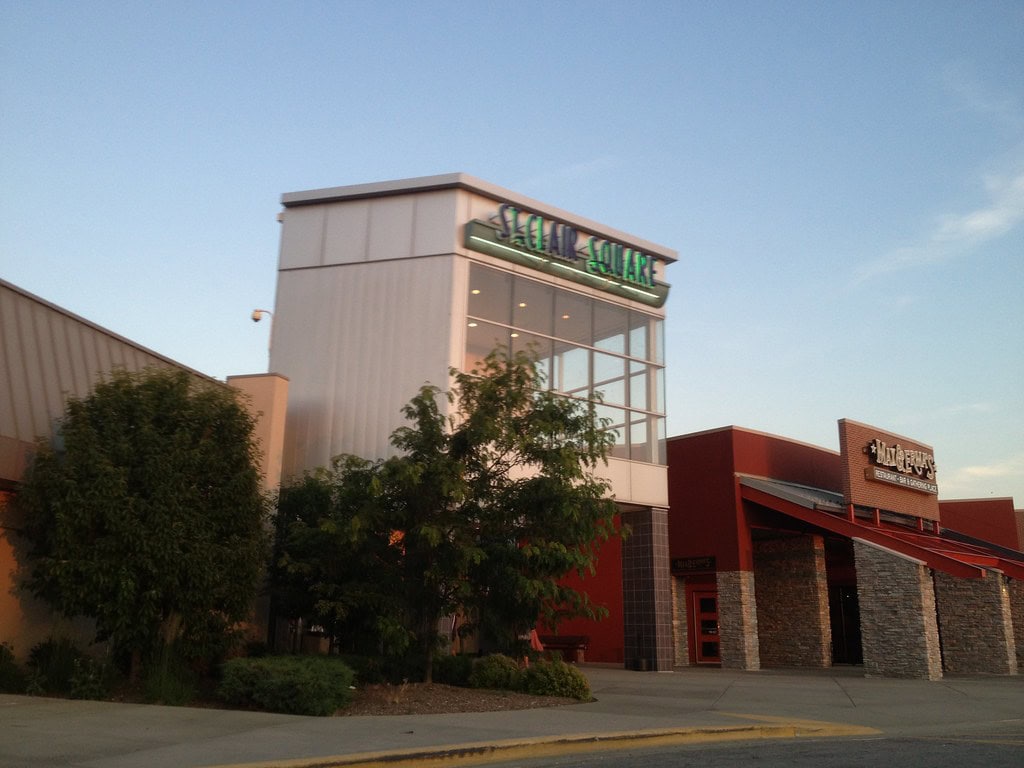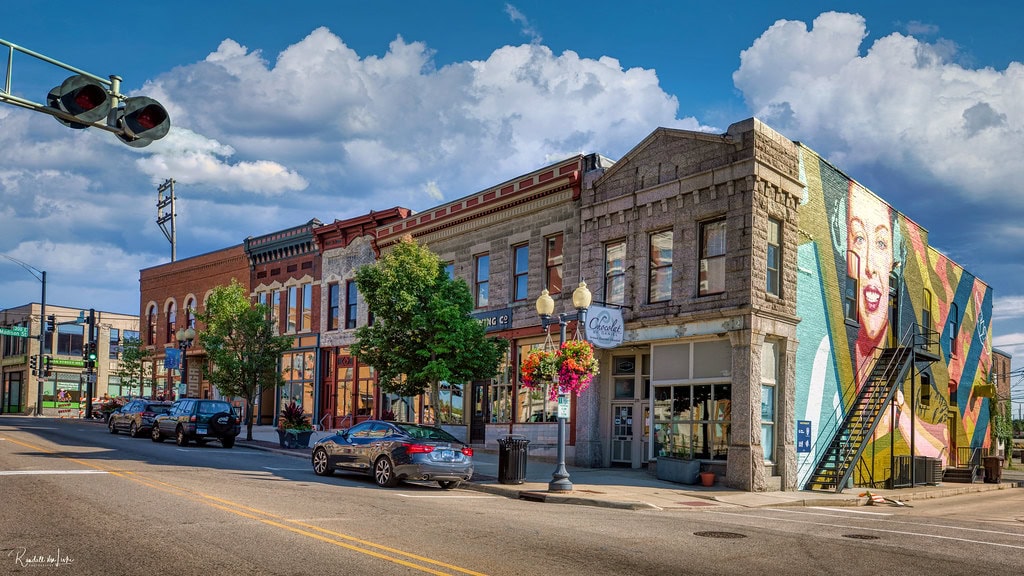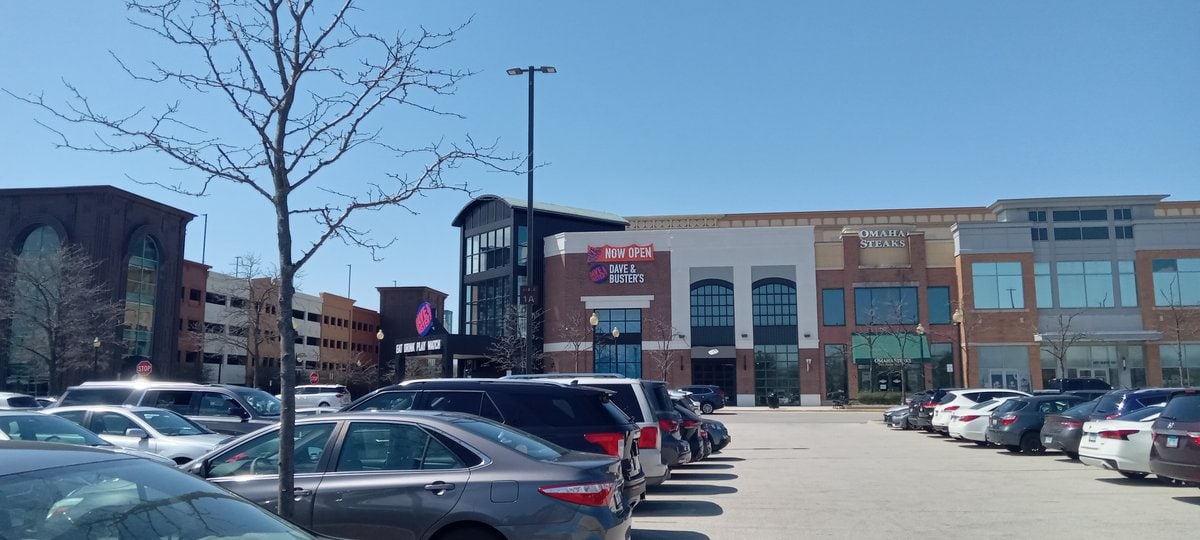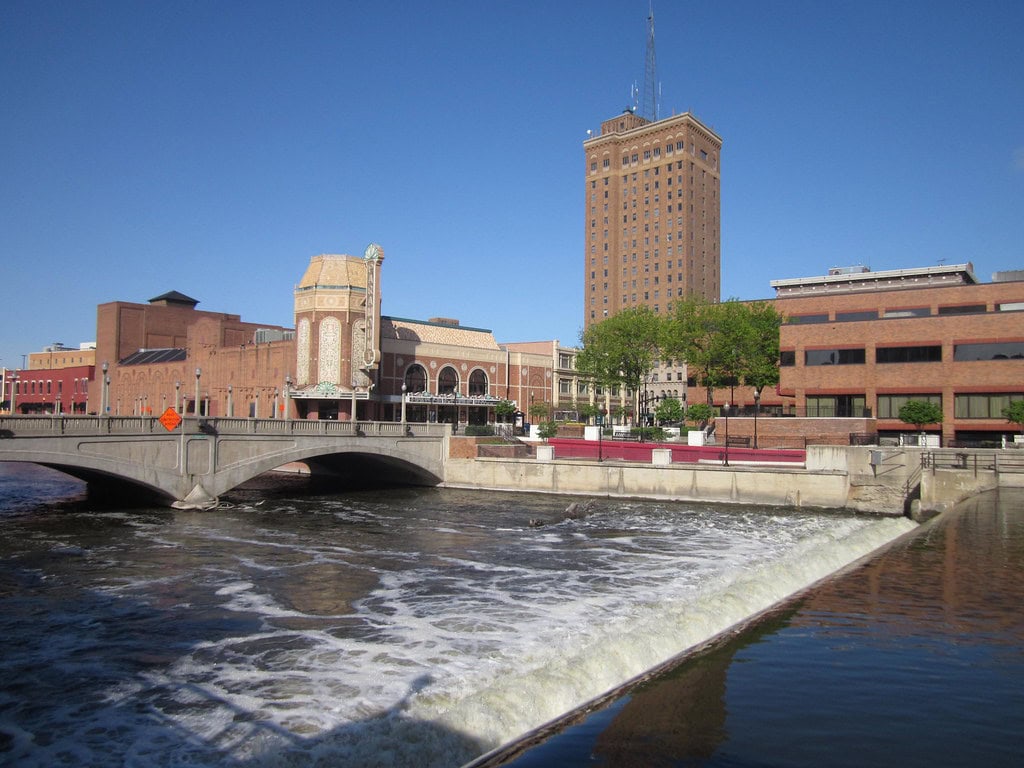
City of Lights, before Paris got the credit
In 1881, Aurora switched on an all-electric street lighting system across its streets.
The change was big enough that the city later formalized a new identity.
In 1908, it adopted the official motto "City of Lights." The idea was simple: make night streets safer and more practical using the new electric system, not gas.
The Fox River mills and fast-growing downtown benefited from lighting that extended work and shopping hours.
The phrase stuck, and the motto still appears on signs, seals, and events today.
Visitors can see the lights reflected off the river through the core of downtown along Stolp Island and the bridges that frame it.
One city, four counties, and not the county seat
Aurora is unusual on the map.
City limits extend into Kane, DuPage, Kendall, and Will counties, a footprint confirmed in city financial reports.
Despite its size, Aurora is not the county seat of any of them.
Those roles belong to Geneva for Kane, Wheaton for DuPage, Yorkville for Kendall, and Joliet for Will.
At the 2024 census, Aurora's population was 180,710, making it Illinois' second-largest city after Chicago.
The split jurisdiction shows up in daily life, from court venues to election administration.
It also shapes how the city coordinates roads, trails, and services along the Fox River corridor.
The first modern dome railcar started here
In 1945, mechanics at the CB&Q Aurora Shops rebuilt a stainless steel coach into the "Silver Dome," the first modern Vista-Dome passenger car.
The dome added a glassed-in seating area above the roof so riders could see in every direction.
After tests on the Twin Cities Zephyr in July 1945, Burlington expanded the idea to long-distance Zephyrs, and other railroads followed.
The Aurora Shops had been Burlington's heavy repair and rebuild center for decades, so the work fit their specialty.
The Silver Dome experiment helped kick off a postwar wave of dome cars that became a signature of Midwestern and Western streamliners.
When blues giants cut records in a hotel sky club
During 1937–1938, Bluebird Records brought a portable studio to the Sky Club at Leland Hotel on Stolp Island and recorded more than 300 sides.
Artists included Tampa Red, Big Bill Broonzy, Sonny Boy Williamson I, and Robert Nighthawk.
The setup was straightforward: musicians took the elevator up, engineers set up microphones, and takes went direct-to-disc.
Those sessions captured a snapshot of Chicago-style blues in a quieter satellite scene and circulated nationwide on Bluebird's budget label.
Decades later, Aurora launched the Blues on the Fox festival to honor the recordings.
The Leland Tower still stands at 7 S. Stolp Ave., anchoring downtown.
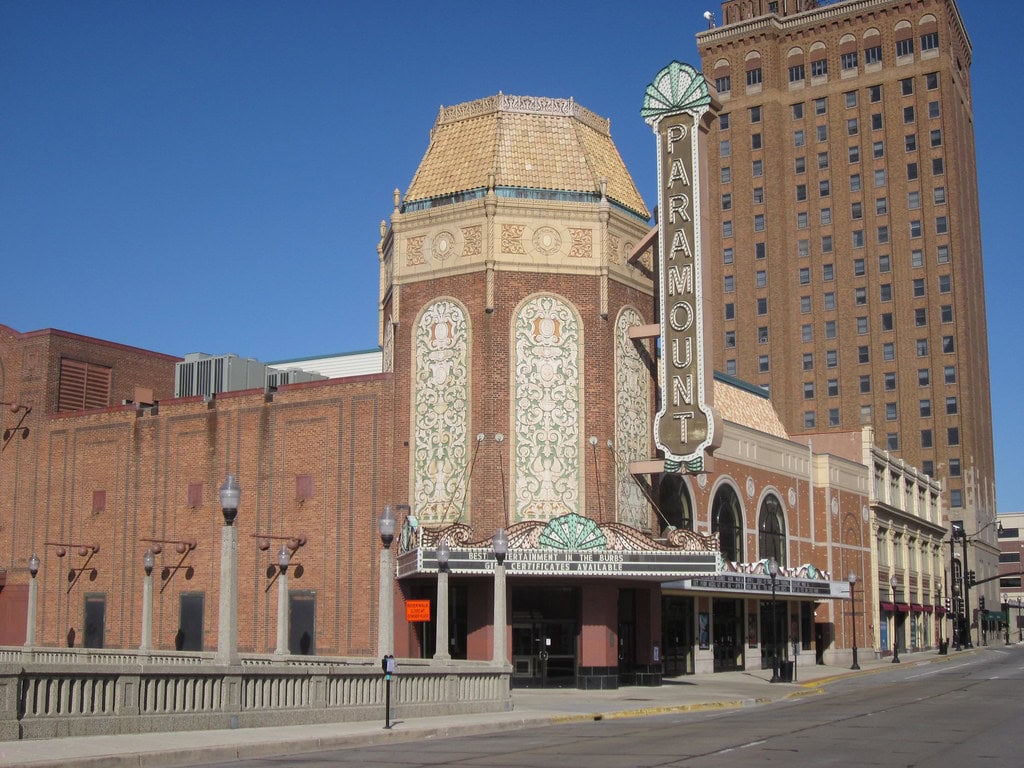
A city center built on an island compromises
Stolp Island sits in the Fox River at downtown's core.
In the 19th century, East and West Aurora grew on opposite banks and often disagreed about where to place civic buildings.
Leaders chose the island as neutral ground.
Over time, city offices, theaters, banks, and bridges rose on this small piece of land.
The island also drew top architects, including George Grant Elmslie, who left Aurora the largest set of his commercial works.
Today, you can cross the New York Street Memorial Bridge and Galena Boulevard Bridge to reach the island's cluster of Art Deco, Prairie School, and early high-rise buildings.
An Art Deco palace that still draws big crowds
The Paramount Theatre opened on September 3, 1931, with a 1,800-plus-seat auditorium wrapped in Art Deco ornament.
Designed by Rapp and Rapp, it brought movie premieres and stage shows to a city shaped by rail and river trade.
The theater survived the mid-century decline of downtown movie palaces and underwent restoration to resume live productions.
It is listed on the National Register of Historic Places and now mounts multi-show Broadway-style seasons.
Walk into 23 E. Galena Blvd.
and you see the stepped geometric patterns, gilded detail work, and lobby spaces that defined big-city theaters of the early 1930s.
The oldest limestone roundhouse became a brewery
Built in 1856 for the Chicago & Aurora Railroad, Aurora's circular limestone roundhouse serviced steam locomotives for more than a century.
It fell silent after 1974.
In 1995, a group led by Walter Payton bought the derelict structure and reopened it as an entertainment complex the next year.
The restoration later earned a National Preservation Award.
Today, the complex operates as Two Brothers Roundhouse, with a restaurant and event spaces wrapped around the original turntable area.
The stone walls and iron framework remain in place at 205 N. Broadway, showing how a 19th-century work floor was adapted to a new use.
A mastodon turned up under a park lake
Workers dredging Mastodon Lake in Phillips Park found Ice Age bones in 1934.
Crews recovered mastodon remains, including tusks and teeth, from the lakebed and nearby ground.
The discovery prompted local displays and later a dedicated exhibit.
The park's Mastodon Gallery now shows the bones and explains the region's glacial past with timelines and scale models.
Outside, the Sunken Gardens and zoo sit near the lake.
The find linked Aurora's landscape to animals that roamed northern Illinois long before farms and railroads.
Visitors can see the collection at the Phillips Park Visitor Center, 1000 Ray Moses Dr.
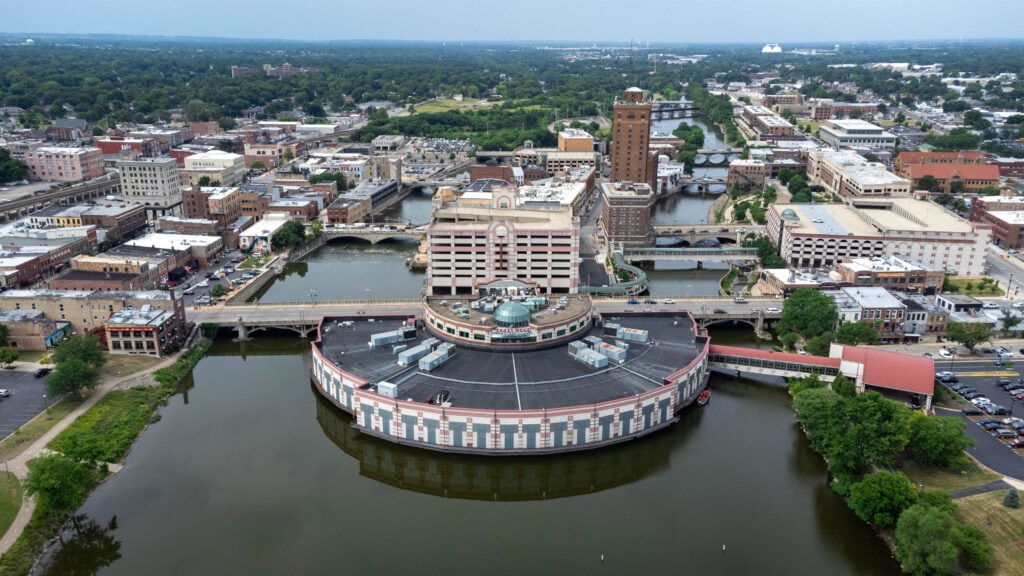
The sitcom sketch that put Aurora on movie screens
When the film "Wayne's World" hit theaters in 1992, it placed its slacker cable-access duo squarely in Aurora.
The movie kept references to actual places, from street signs to the Fox Valley setting, even though many scenes were shot elsewhere.
The running joke was a basement show broadcasting from a mid-American city outside Chicago.
The hometown tie has lasted for decades in fan maps, anniversary screenings, and pop-culture nods.
Drive through downtown and you will spot intersections and bridges that match the film's backdrop, along with a city that leaned into the reference without turning itself into a movie set.
Illinois' first free public school system started here
In 1851, East Aurora created Illinois' first free public school system under a special act of the state legislature.
Before that, local schools charged tuition or relied on private support.
The new arrangement set up publicly funded schools open to all children in the district.
The city later opened a public high school on the east side in 1867.
The move helped standardize schooling in a fast-growing factory and railroad town whose population was rising with new mill and shop jobs.
East Aurora School District 131 still serves the community today from campuses spread across the city's east side.
A workplace tragedy that the city marks every year
On February 15, 2019, a fired employee opened fire inside the Henry Pratt Company facility at 641 Archer Ave., killing five workers and wounding others before police shot and killed him.
The attack unfolded over roughly 90 minutes, drawing officers from around the region.
In the years since, families and residents have gathered on the anniversary to name the victims, place flowers, and read statements.
The events led to internal reviews by law enforcement and renewed attention to background checks and workplace safety.
A tall gopuram beside Sullivan Road
Opened in 1986, the Sri Venkateswara Swami (Balaji) Temple rises along 1145 W. Sullivan Rd. on Aurora's west side.
The complex follows South Indian temple design, with a carved gopuram and sanctums for multiple deities.
It serves a wide regional community for regular worship, festivals, and cultural classes.
The site includes charity kitchens, halls for ceremonies, and a calendar that draws visitors from around the Midwest.
The temple established Aurora as a center for Hindu religious life in the Chicago area outside the city proper.
Its buildings and towers are visible from nearby Sullivan Road and the I-88 approach.
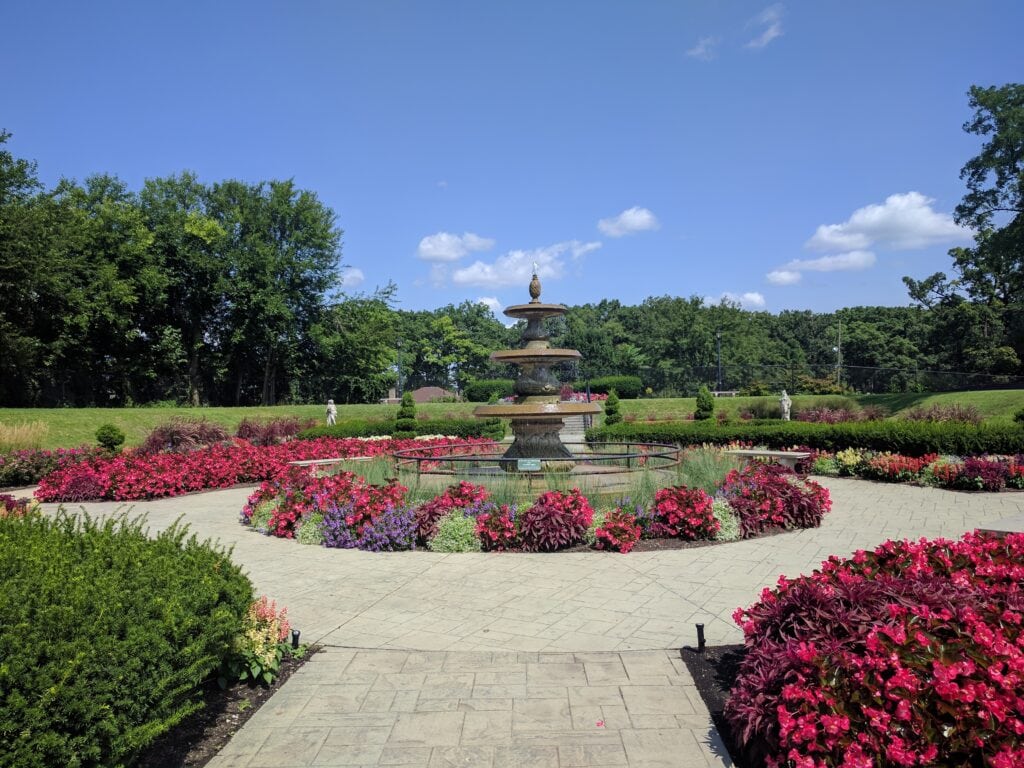
A riverboat casino that is packing up for the highway
Hollywood Casino Aurora opened on the Fox River in June 1993 as a riverboat operation attached to Stolp Island.
State law later allowed moored casinos, and the facility settled into a fixed floating structure with gaming floors and restaurants.
In 2023–2024, owner Penn Entertainment received approvals to relocate to a land-based site near I-88 and Farnsworth Road, close to the outlet mall.
The city's public updates say the downtown barge will close when the new complex opens and that the river site will be cleared.
The move shifts a major entertainment use from the river into a highway corridor.
A riverfront park that opened with 2 nights of blues
RiverEdge Park opened in June 2013 with two nights of Blues on the Fox on the outdoor Music Garden stage at 360 N. Broadway.
The new venue gave the city a purpose-built amphitheater on the Fox River with terraces, a wide lawn, and a skyline view of Stolp Island.
The design handled festivals and touring shows while linking to the Fox River Trail and downtown bridges.
The opening weekend drew large crowds and kicked off a summer schedule that mixed blues, rock, and community events.
The park remains the city's main outdoor concert site each warm-weather season.

